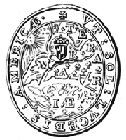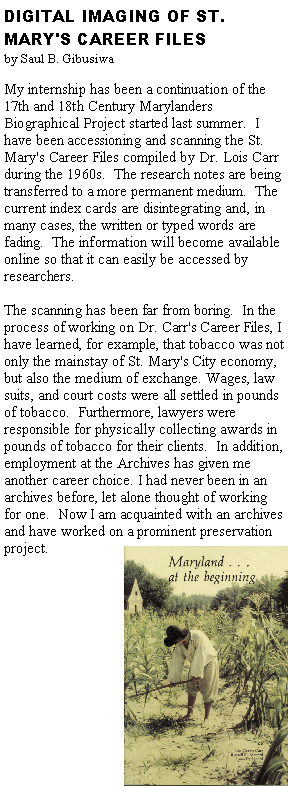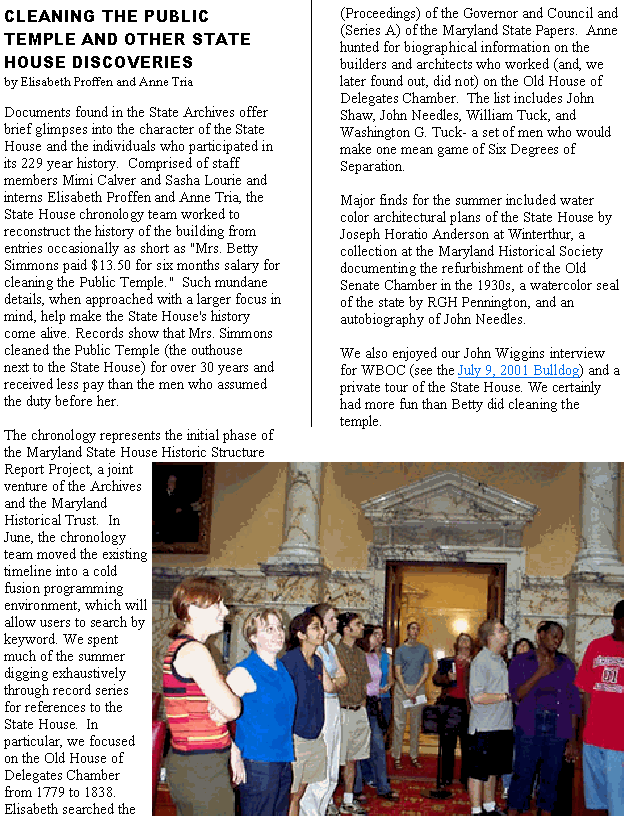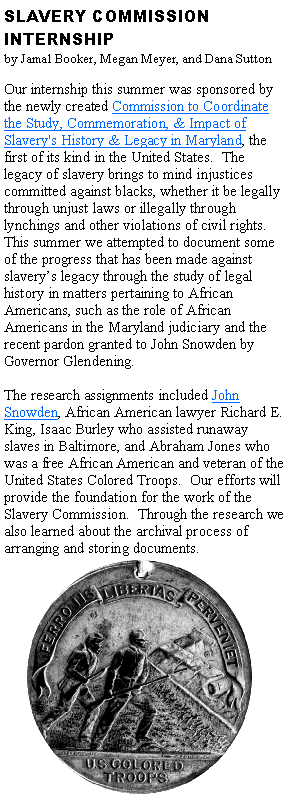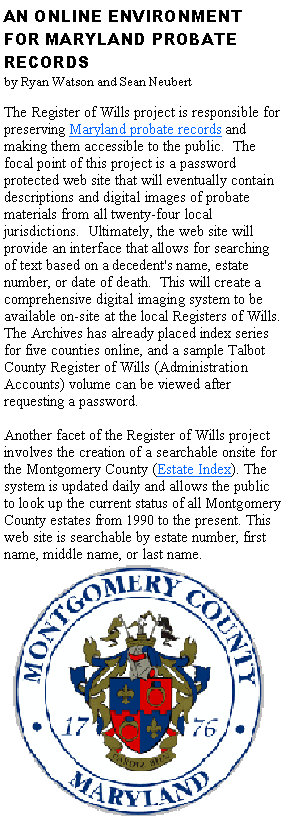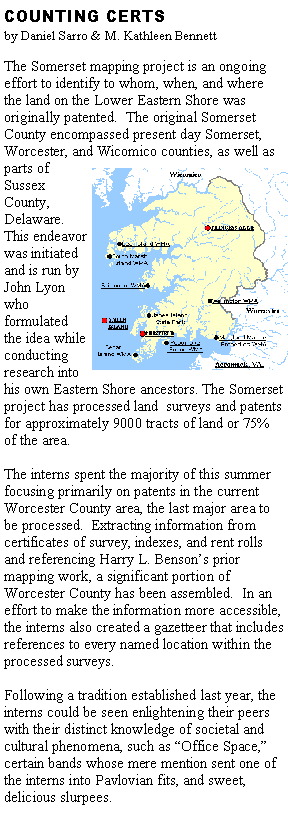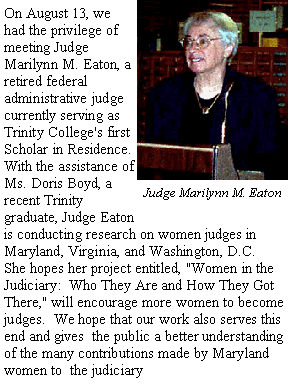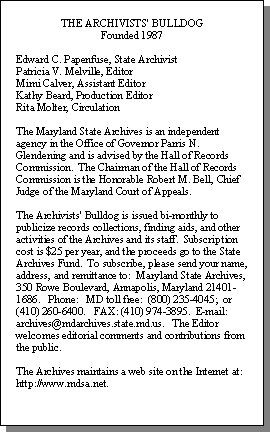|
FROM TESTY TAPES TO DUCTILE DIGITAL
by Lee Watkins IV
In sweltering July heat, former Governor Marvin Mandel
leads the way to an area within his home. He pries
open a steel door to expose the dark interior, and the
Archives special collections staff peers inside. "Don't
shut the door," he warns, "I don't have the
key."
With the aid of utility lamps, fresh boxes, and a huge
roll of bubble wrap, the Archives moved several truckloads
of documents. Hidden for decades from the light of
day were reels of movie film, reel-to-reel tapes, audio
cassettes, large format negatives, slide carousels, and
finely crafted framed photographs. There were
unopened packages containing gifts, canvas paintings
in stylish poses, box after box of meritorious plaques,
and even an example of the much-ballyhooed slot machine.
The quantity of salvageable materials far outweighed the
initial projection, but was handled effectively with help
from staff Emily Squires, Rob Schoeberlein, Nancy
Bramucci, and interns Jo Ella Straley and
myself.
Luckily most of my summer was not spent polishing up old
slide carousels or peeling dusty photos out of defunct
picture frames. I must extend my gratitude to Jo
Ella for all her help preparing materials and entertaining
everyone. I actually spent considerable time
carefully recording dated audio cassettes to CD digital
audio. These were meticulously sampled on the
computer (unless they snapped) and then compressed using
MPeg algorithms.
The 120 tapes accompanying the Mandal papers contain
press conferences, speeches, international travel logs,
and comments by the governor, his allies, and his
opponents. The digital counterparts are playable
with any media player, including Microsoft Media, Real,
Quicktime, or any of the dozens of free MP3
players.
|
|
